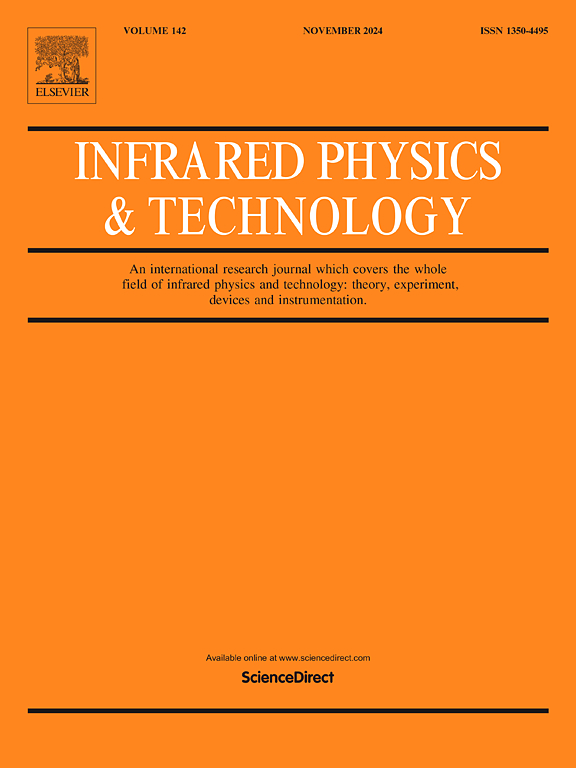Relevant channel selection in hyperspectral imaging to enhance crack segmentation in historic concrete buildings
IF 3.1
3区 物理与天体物理
Q2 INSTRUMENTS & INSTRUMENTATION
引用次数: 0
Abstract
Recent years have been fruitful in the development of computer vision methods for a wide variety of applications. Despite the successful results achieved in the segmentation of cracks on concrete surfaces, poor results are still persisting during onsite application, mainly due to noise caused by biological colonization, which is present in most of historical heritage buildings. The authors have been working on this problematic and developed the SC-Crack method previously, however it still relies on the cumbersome task of acquiring sets of 17 channels images to compose an hyperspectral cube and still requires case-wise hyperparameter optimization. Consequently, it is important to define which spectral information mostly defines the success of the method, enabling to optimize both, the acquisition procedure and model processing. Following, a study aiming at the selection of the more informative channels was carried and the hyperparameter-free model is evaluated.
In this scope, images of concrete specimens were acquired sequentially to compose a 17 channel hyperspectral image cube. These were sere compute allowing to define the most informative channels sets that are processed using the SC-Crack+ method, presented in this work. The reduced image cubes of cracking on clean concrete surfaces and on surfaces with biological colonization were processed and analyzed. Relevant and improved results were achieved for crack segmentation, following this SC-Crack+ model. This enables the possibility of mounting cameras with sensors and lenses particularly adapted for prone acquisition targeting only the most relevant hyperspectral information for crack segmentation and still using traditional feature engineering image processing methods.
高光谱成像中相关通道选择,增强混凝土历史建筑裂缝分割
近年来,计算机视觉方法的发展取得了丰硕的成果,并得到了广泛的应用。尽管在混凝土表面裂缝分割方面取得了成功的结果,但在现场应用中仍然存在较差的结果,主要是由于生物定植引起的噪音,这在大多数历史遗产建筑中都存在。作者一直在研究这个问题,并开发了SC-Crack方法,但是它仍然依赖于获取17通道图像集来组成高光谱立方体的繁琐任务,并且仍然需要逐例超参数优化。因此,重要的是确定哪些光谱信息主要定义了方法的成功,从而能够优化获取过程和模型处理。接下来,针对选择更多信息通道进行了研究,并对超参数无模型进行了评估。在这个范围内,混凝土样品的图像被依次获取,组成一个17通道的高光谱图像立方体。这些是严肃的计算,允许定义使用SC-Crack+方法处理的最具信息量的通道集,在这项工作中提出。对清洁混凝土表面和有生物定植的混凝土表面裂缝的约简图像立方进行了处理和分析。采用SC-Crack+模型,对裂缝分割得到了相应的改进结果。这使得安装带有传感器和镜头的相机成为可能,特别是适用于倾向于仅针对最相关的高光谱信息进行裂缝分割,并且仍然使用传统的特征工程图像处理方法。
本文章由计算机程序翻译,如有差异,请以英文原文为准。
求助全文
约1分钟内获得全文
求助全文
来源期刊
CiteScore
5.70
自引率
12.10%
发文量
400
审稿时长
67 days
期刊介绍:
The Journal covers the entire field of infrared physics and technology: theory, experiment, application, devices and instrumentation. Infrared'' is defined as covering the near, mid and far infrared (terahertz) regions from 0.75um (750nm) to 1mm (300GHz.) Submissions in the 300GHz to 100GHz region may be accepted at the editors discretion if their content is relevant to shorter wavelengths. Submissions must be primarily concerned with and directly relevant to this spectral region.
Its core topics can be summarized as the generation, propagation and detection, of infrared radiation; the associated optics, materials and devices; and its use in all fields of science, industry, engineering and medicine.
Infrared techniques occur in many different fields, notably spectroscopy and interferometry; material characterization and processing; atmospheric physics, astronomy and space research. Scientific aspects include lasers, quantum optics, quantum electronics, image processing and semiconductor physics. Some important applications are medical diagnostics and treatment, industrial inspection and environmental monitoring.

 求助内容:
求助内容: 应助结果提醒方式:
应助结果提醒方式:


